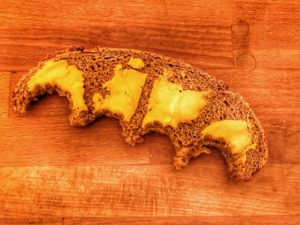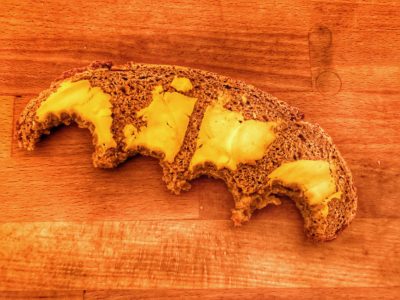The Food Evolutions project is about finding ways to connect modern Westerners with ancient and time-honored food technologies from the past. This weekend I am thankful to have had the opportunity to spend two days fulfilling this mission at the Airfield Food Festival.

The Airfield Food Festival was a 2-day festival organized for the public to “engage with local food producers and enjoy the very best of Irish food and drink over a weekend packed with fun activities for all the family all based around the theme Food Literacy: Unearthing the Knowledge Gap.” There are workshops and demonstrations by Leinster Honey, Featherbed Ice Cream, Corleggy Cheese, Green Earth Organics, McCabe’s Coffee, Gaby and Hans Weiland, and me. Food producers included Rounstone Bakery, Simons Fish, This is Seaweed, Magic Mayan Chocolate, Cloonagh Smokin Soul, Lala Poutine, McCabes Coffee, Daves Wood Fired Pizza, Tremendous Truffles, Wcked Foods, Chop It and Cubslough Farm. Over the course of the weekend an estimated 11,000 people attend the event and took advantage of the food producers, workshops and demonstrations.

My stand, the Food Evolutions Project, was located in one of the large tents adjacent to the Roundstone Bakehouse set up. In planning for this event is was important to me to find a way to use this opportunity to connect people with a traditional food processing technology in a meaningful and powerful manner. This meant I had to make whatever I did accessible and relevant to the event, the location of my stand, and the people attending the festival…
I finally decided a few weeks ago that an interactive demonstration and display focused on cultured butter was the perfect choice! Nutrient dense, cultured butter made from local cream, produced by grass-fed cows fermented with a variety of different cultures was simultaneously accessible and educational. Like so many other foods, the label, butter, is one of those terms that can refer a variety of completely different foods that share absolutely nothing in common except their label and that they superficially look alike. But, because they are made from different ingredients and produced in different ways they possess and make available completely different nutrients to our bodies. Equally important everything about these different foods – from what they are made of to how they are made to how they are marketed, represent completely polar opposite messages about approaches food, diet, health, and sustainability. They often also taste different, have different shelf lives, and because of the everything that goes (or doesn’t go) into making them they represent different approaches to food, diet, health, and sustainability. Plus, it was a perfect link with the amazing long fermented, ancient grain, Roundstone Bread display next to me – Bread and Butter, perfect!

By using butter as a vehicle, I was able to engage in scores of in-depth conversations with festival attendees about these complex issues. And, to drive the messages home, everyone who visited the Food Evolutions stand had the opportunity to sample the four different butters I made for the event. These butters all tasted, felt, smelled, and looked different from one another. However, what they all have in common is that they were made from local, grass-fed, organic cream and are were all cultured, or fermented. This means they are all alive – they are probiotic and they all have qualities that are specific to this part of the world – terroir!
All four butters were made from the same cream from a small dairy, The Village Dairy in County Carlow. One butter was made from the raw cream, fermented using the wild bacteria present in the cream and in the air. The other three butters were made using the same cream, but pasteurized. Since the cream was pasteurized and the bacteria present in the cream killed as a result, it had to be inoculated with a live culture to begin the fermentation. In one case the fermentation was initiated with kefir, in another a mesophilic yogurt, Vilii, and the final with an industrial freeze dried and powdered mesophilic cheese making culture – Aromatic B.

By far, the crowd favorite was the raw, wild fermented butter. The kefir butter came in second with the yogurt butter a close third. The factory produced, freeze dried, Aromatic B mesophilic culture came in a distant fourth.
Most of the people who selected the raw, wild fermented butter commented that it tasted of their childhood or it reminded them of the butter their grandmother made. And it should! It is the way that butter has been made for thousands of years. Sweet cream butter, made from fresh, pasteurized cream without fermentation, is a relatively new creation. Sweet cream butter is a completely dead food and lacks the flavor development that cultured butters possess. Alternatively, cultured butters are completely alive, boasting the same probiotics that whatever bacteria it was inoculated possess! The raw, wild fermented butter has the added benefit of relaying terroir – the sense of place delivered through food – via its taste and smell.
EVERYTHING ABOUT THIS BUTTER – FROM THE GRASS TO THE COWS TO THE MILK TO THE WILD BACTERIA PRESENT IN THE CREAM AND THE AIR – IS SPECIFIC TO THIS PLACE.
It cannot be made anywhere else in the world. Butter made like this somewhere else would taste different. No, eating this butter is like eating Ireland. It was a true pleasure to provide this opportunity to everyone at this event and to connect them through this simple yet powerful food technology with their past and with their place.









 Food Literacy: Unearthing the Knowledge Gap
Food Literacy: Unearthing the Knowledge Gap
Leave a Reply